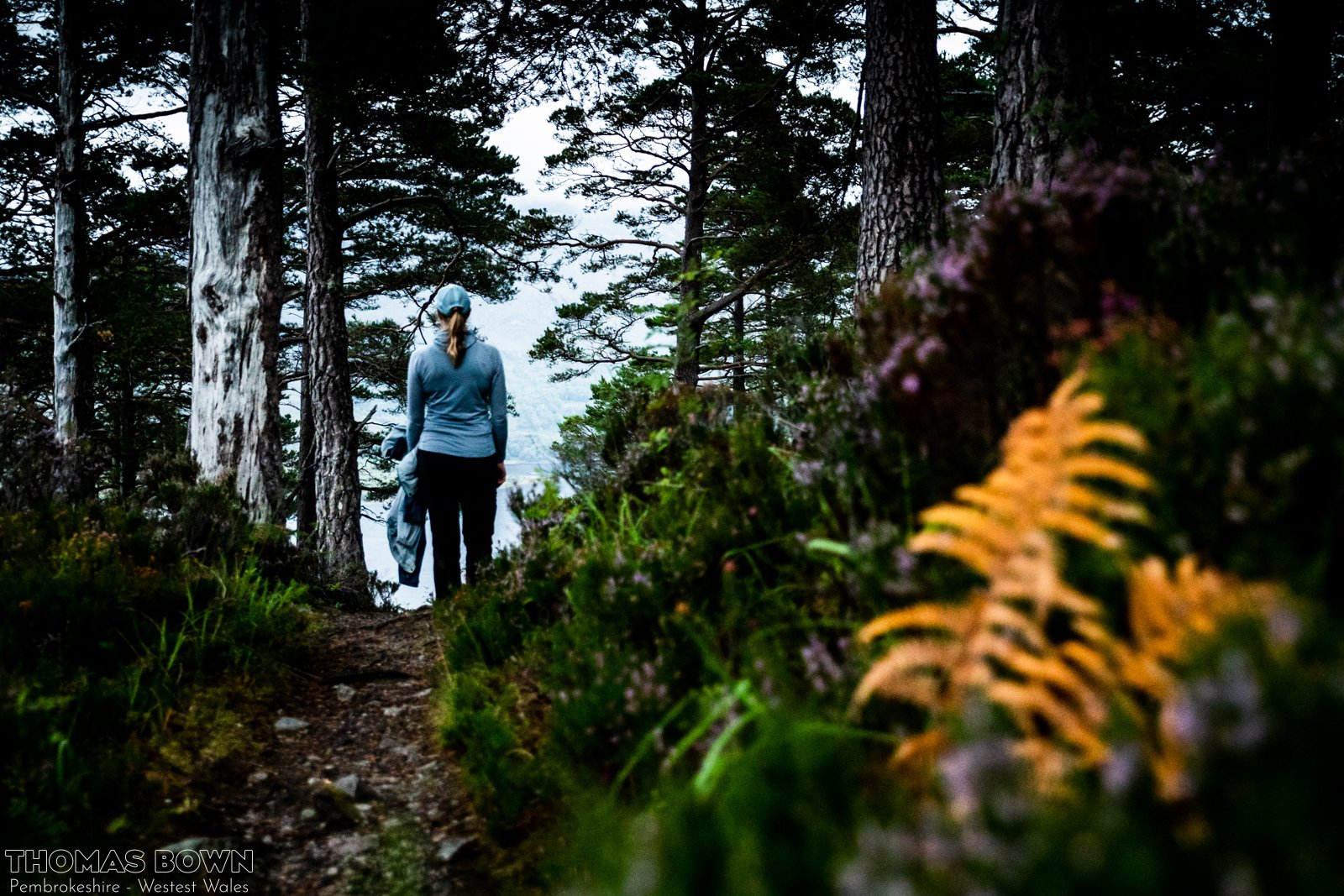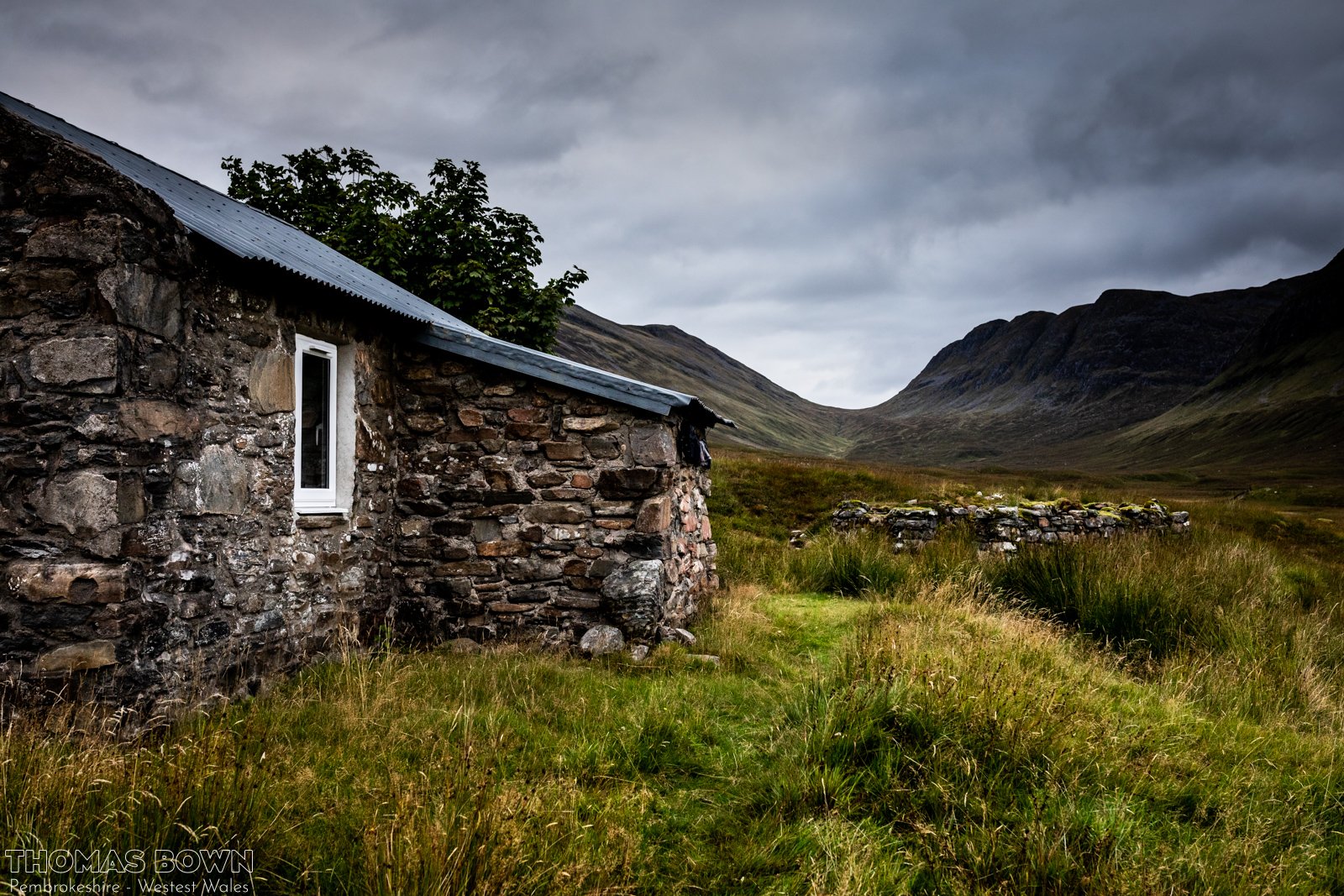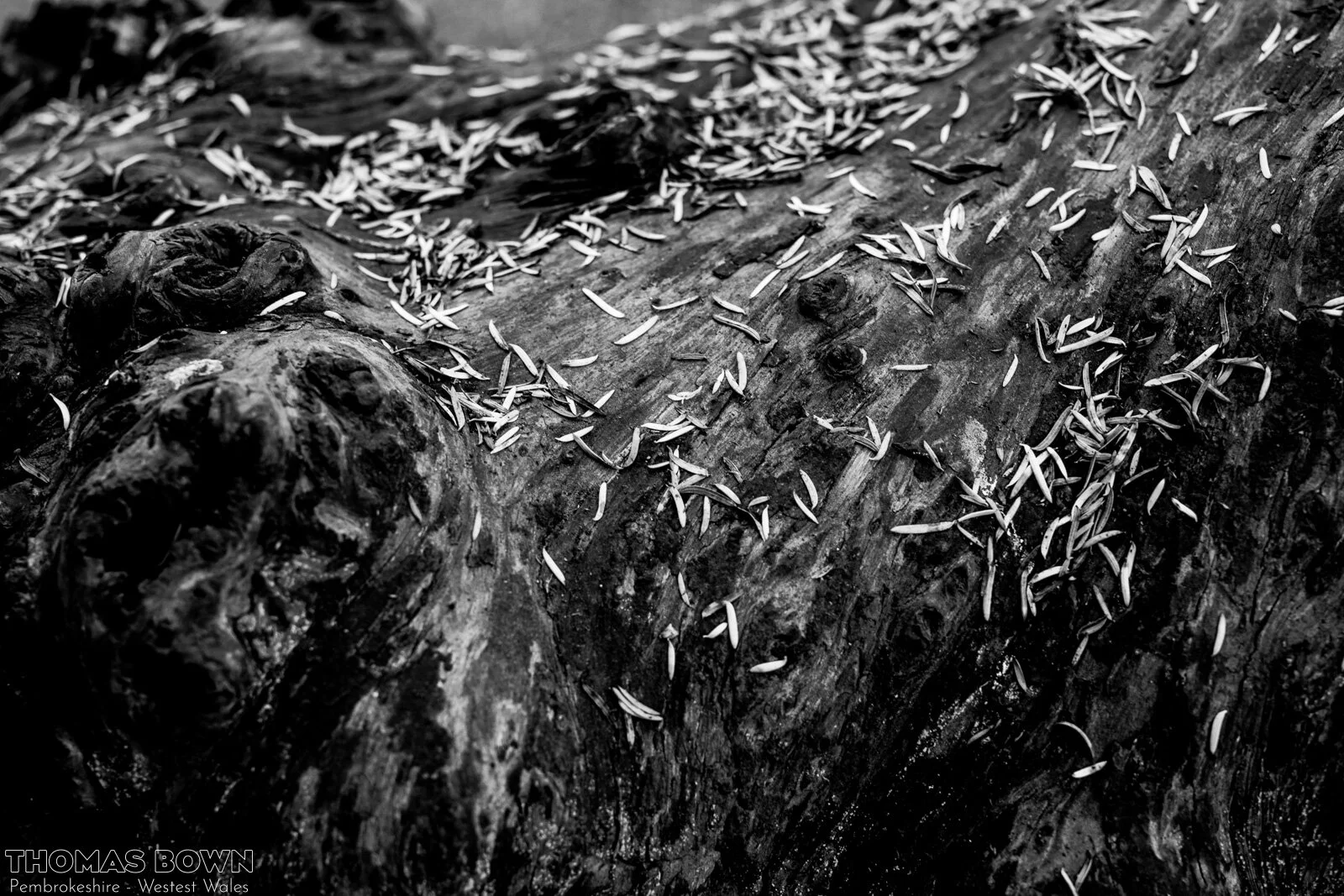Some winter surf action down at Whitesands from a few days ago. A nice sunset and some decent waves coming through meant for a bit of fun with the long lens.
Scotland
Apologies for my lack of content on here of late. I’ve been somewhat lacking in inspiration over the Winter plus some internet troubles meant that I wasn’t able to upload images. I will endeavour to be out more with the camera and share the results here and on the usual channels. It’s been a few months now since we went on a trip to Scotland. Hoping for some nice Autumn weather we were a bit unlucky with plenty of dreich days but we managed a few adventures in the mountains, escaped the crowds where we could and managed to get across to the Isle of Mull which was a highlight. Below is something of a photo dump of or time which was mainly in the Western Highlands, Skye and Mull.
Offas Dyke for Mother Goose Films
In June I popped down to Shropshire to meet with Rob, the warden for the Offas Dyke National Trail that runs the length of the border between Wales and England. An ancient boundary, the path was established as a National Trail 50 years ago and Mother Goose Films have been commissioned to provide photo and video to promote the path at this milestone. I went down to get some shots for them that showed off the bluebells which were in full bloom, adding colour on a grey day.
Grassholm
Back in the summer we went on a boat trip out to Grassholm with Falcon Boats. This is one of the longer trips you can do from Pembrokeshire as Grassholm is quite a way offshore and lies on the other side of St Brides Bay. Leaving from the slipway at St Justinians and motoring South beyond Ramsey, we kept an eye out for wildlife on the way and were lucky enough to see common dolphins and porpoise. Motoring slowly gives a good chance to get close to the dolphins as they like to interact with the boats but on this occasion they weren’t too interested so we headed on to Grassholm. The island is home to one of the largest Gannet colonies in the Northern hemisphere and we were able to slowly motor around the island to get a good look at the various groups perched on the rock or leaving and returning from hunting excursions. We then motored out towards the Smalls lighthouse which sits on rocks that are even further offshore. We had a good glimpse of some Rissos dolphins which are not a common sighting and lovely to see. They are less inclined to come and investigate a boat so our glimpse was short lived. It was interesting to get close to the lighthouse as it’s a sight that has only ever appeared to me as a tiny feature on the horizon despite being fascinated by its history.
The trip was a good chance to have a go with a long lens I’d recently bought second hand. The Sigma 150-600mm F5-6.3 DG. The lens is much bigger and heavier than my usual lens and it’s tricky to get used to holding such a big lens whilst on a moving boat so a lot of my shots weren’t up to much but here’s a few that were of reasonable quality. I think a lot more practice might be required to get some of the amazing wildlife shots that are possible with such a lens!
The Church at Nevern
I was up in Nevern recently so decided to pop into the church there as I hadn’t visited before. It’s a fascinating place with a long and interesting history. It was founded in 540 AD by St Brynach who it is said had the help of a wild stag which dragged the first timbers from the surrounding woodland. Many evangelists travelled across Europe from as early as the 1st Century AD and were known as Peregrinatio pro Christo ‘Pilgrims for Christ’. St Brynach came from Ireland as one of these early messengers.
There are numerous legends about him, as with other early Saints, but these were written 400 years later at a time when the monks who wrote them were trying to ‘big up’ the role of the Church in Society. We don’t know if these are true, but, as Dr. Johnson said, ‘you may believe them or not without imperilment to your soul’. Nevern Church.
Brynach is thought to have chosen Nevern because it was afforded protection from the castle that sat above the site and had existed as a stronghold for tribal chieftains since the Iron Age. The River Nevern served as an access route for viking longboats and over the course of 300 years, raids on the area were a common occurrence. The castle was a good place to seek shelter from the raiders who would move on to seek easier targets rather than engage in a protracted siege. In the 10th century, many thousands of pilgrims passed through Nevern on their way to or from St Davids which had become an important religious centre. The church was rebuilt and improved over the years as the influence of church and religion waxed and waned but in 1864 the Victorians renovated the church with money brought into the area by the burgeoning industrial revolution.
The imposing celtic cross that stands in the churchyard is carved from a piece of local dolerite and dates from the 10th century when the Normans brought Catholicism to the church. At this time the decor is thought to have been much more gaudy with paintings depicting biblical stories adorning the walls. In the 15th century the Reformation brought an end to the catholic era and the church became Anglican.
The yew trees in the grounds have a few legends associated with them. The 'Bleeding Yew' weeps a red, blood like sap from a patch on the trunk. A monk is said to have been hanged from the tree and according to the legend, the man declared his innocence and proclaimed that: "If you hang me guiltless as I am, the tree will bleed for me". Equally as unbelievable but entirely true is that the tree is around 700 years old.
River Swimming
One of the many hot days of summer this year and a trip to landlocked Wiltshire. A search for a suitable place to slip into the Avon led to a path through the undergrowth, a clamber down the muddy bank and a cooling swim amongst lilies and demoiselles in the afternoon heat. River swimming always feels a little different to the coastal waters of home; nettles and brambles threaten the route to ingress, lowering ourselves from the top of the steep bank is rewarded with a squelching of mud between the toes and a course is navigated, arms held aloft, through roots and reeds to the point at which one can tentatively push off from the bank into the slow flow of the river. What lies beneath in these waters is unfamiliar and there’s the stirring of memories from childhood; warnings of pike and their needle sharp teeth mingle with tales of the riverbank from cultures and rivers both local and from the pages of stories told. Tom Sawyer and Huckleberry Finn, The Wind in the Willows and all those folk songs about the Mississippi or the Findhorn. The Wye, the Tay and the Spey, those evocative names for the arteries that carry the characteristics of their banks out to the sea beyond. The water feels different too; somehow it’s smoother and the abrasive sting of salt is replaced by the earthy smell of water that has percolated through the fields and woodlands that border the river. The source of the Avon is in Gloucestershire and hasn’t travelled far by the time it reaches Bradford on Avon. It’s journey will then take it winding through Wiltshire, the cities of Bath and Bristol and its industrial hinterlands before it eventually spills into the Severn Estuary at Avonmouth, a different river to the one that was born in the Gloucestershire countryside.

























































































